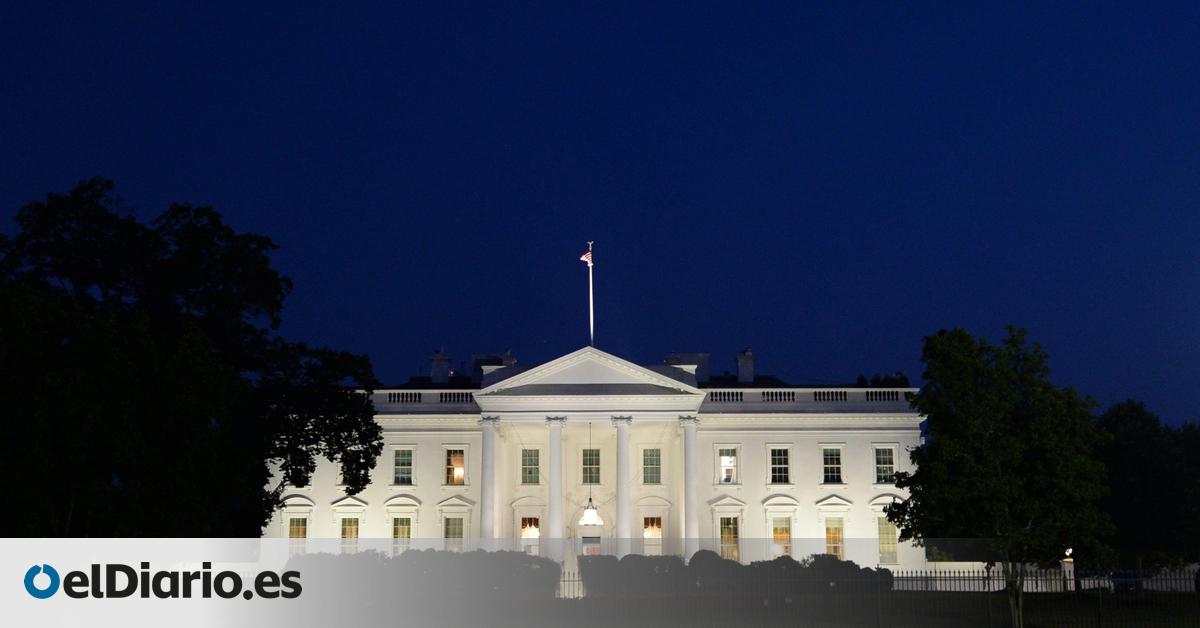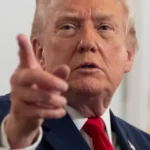
After seven o’clock in the afternoon in Washington, the closure of government in the United States was already assumed. The inability of these days of reaching an agreement to continue financing the Executive until November 21 has materialized in the Senate with a vote 55 to 45. Five votes less than the 60 minimum required. The Democrats have refused to process a budget in which the Republicans refused to include a game to extend the Obamacare subsidies and reverse the clippings to the Medicaid approved with the Julio Fiscal Plan, the Big Beautiful Bill.
The early morning of Wednesday, the closure of government has become effective, with consequences that increase more gloomy than usual. Normal, government closures are a certain administrative chaos, since most federal workers are temporarily suspended. It is not until the blockade that their salary is re -charged retroactively. Only those employees who are considered essential continue to work without collecting. Once the government is reopened, employees perceive the pay with retroactive character. But this time, the panorama is drawn much more turbulent with the threat of mass layoffs by Donald Trump.
The last time the country entered into a government closure was in 2019, also under the presidency of Trump. Government closures last what both parties take to agree on a new budget. On that occasion, the closure lasted 35 days, being the longest that the United States lived in forty years. The current discrepancies on the financing of health services with the Democrats are sour. But even so, the Senate is expected to vote on the financing on Wednesday, as explained by Republican Senator John Barraso at the end of Tuesday’s session.
A few hours before the vote, Tuesday’s noon, Trump said from the oval office that “many good things can leave a government closure, you can get rid of a lot of things we don’t want. They would be Democratic things.” With the closure of government, the US president has more wide manga to continue purging the official and give priority to his agenda while dismantling those areas that do not interest him.
Government closures are more governed by tradition than by norms, so Trump has broad discretion to define what he considers essential. For example, during the closure of Barack Obama government in 2013 the national parks were closed, while Trump kept them open in 2018 – although the judges then resolved that it was illegal. The Republican has already made it clear that his priorities are border control, military deployment in the capital, as well as immigration raids. Those other “Democrats” things that Trump threatened to get rid of them could be related to the Department of Education – wants to dismantle it – or the agencies destined for environmental protection.
The Executive Director of Partnership for Public Service, Max Stier, warned in replacement how the closing of Government would give Trump and his head of the White House Budget Office (WBO), Russell Vought, “will have a huge freedom to determine what services, programs and employees can be separated, decisions that could go far beyond what has happened during previous closures.”
Vought is one of the authors of Project 2025, specifically that of the chapter where he explains how to achieve an absolute presidency through the control of the OMB and different executive actions. The ideologist after the mass layoffs of Elon Musk who left about 200,000 federal workers on the street was Vought. The exit of the billionaire as a government advisor has now forced him to take a more visible role within the presidential cabinet.
It is also possible that the closure of government on this occasion impacts the American economy, especially now that shows signs of fragility with the recent cooling of the labor market. To begin with, the blockade could suppose the interruption of the publication of the occupation data of the month of September, something essential to continue monitoring the health of the economy. It is based on these reports that the Fed lowered a quarterfinal the interest rates.
The Democrats were at an poisoned crossroads. Last March, when Trump has already saved another government closure under the pretext of avoiding more chaos in the middle of Musk’s layoffs, the bases of the party were disappointed. The most progressive wing criticized the leader of the Democratic minority, Chuck Schumer, for not having a blow to Trump’s first autocratic tics. This time, avoid the closure of the government of an administration that is leading to the limit, American democracy would have left expensive. And do it without even achieving concessions on the financing of health services, even more.
Although having been planted with the Republicans can be a good start to start doing some opposition and preparing the land for the legislative elections next year, it can also play against the Democrats. Trump and his people have dedicated themselves these days to disseminate bulos, ensuring that the Democrats were going to allow a government closure only for wanting to defend the medical benefits for immigrants. Something totally false.
On Monday, after the failed meeting with the Democrats to unleashed the budget, Trump published a false video where Schumer appeared and the leader of the Democratic minority in the House of Representatives, Hakeem Jeffries, speaking about the alleged benefits that immigrants would take with his proposal. For greater mockery, Jeffries appeared wearing a Mexican hat.
After the vote failed in the Senate, Trump also shared images generated with AI on Schumer and Jeffries. In one of the photos, both Democratic leaders arguing in the Oval Office with the president of the House of Representatives, Republican Mike Johnson. Above the table, in the foreground there is a “Trump 2028” cap, although it cannot be presented a third time. The president already assumes that the closure of government, instead of taking its toll on him, will do it to the Democrats.
Source: www.eldiario.es

